Lord of the Grass
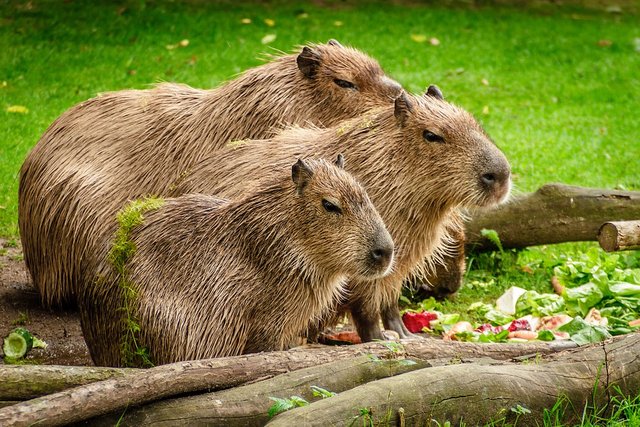
During these exhausting times, all of us could use some cute animals. But cats and dogs are so common, why not have something special? Like a guinea pig? Although those might be a bit tiny to really cuddle. I know the ones my brother owned didn’t like that at all.
Let’s instead have a look at giant guinea pigs! More precise, at “Hydrochoerus hydrochaeris” - the capybara which lives in Central and South America.
The name capybara comes from the indigenous Tupi people. In their language, ka’pii means grass and gwara means eater. So the capybara is a … grass eater. And a big one at that!
They are 60 centimeters tall, 1 - 1.30 meters long and … 35 - 66 kg heavy! Each day, capybaras eat about 3 - 4 kg of grass.
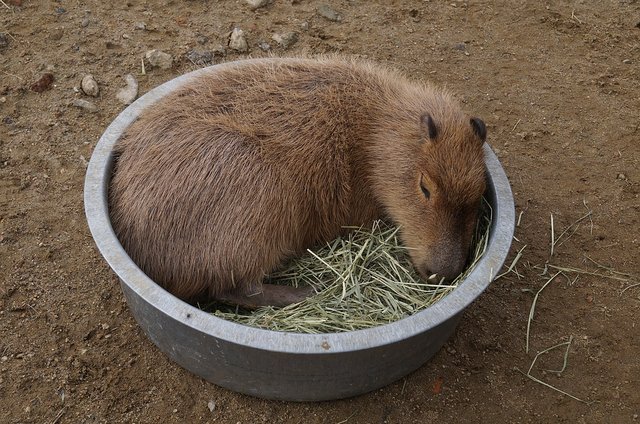
As they are rodents, they constantly need to wear down their front teeth because those don’t stop growing. If they don’t wear them down, those teeth can grow into the other jaw and completely close off the mouth which causes the animal to starve. I have seen this in lab mice with a malformation in the head that prevented proper tooth usage. It’s not pretty. @suesa
What is pretty is the way capybaras live in huge groups of 10 to 40 individuals, depending on the season. They’re incredibly social and raise their babies together.
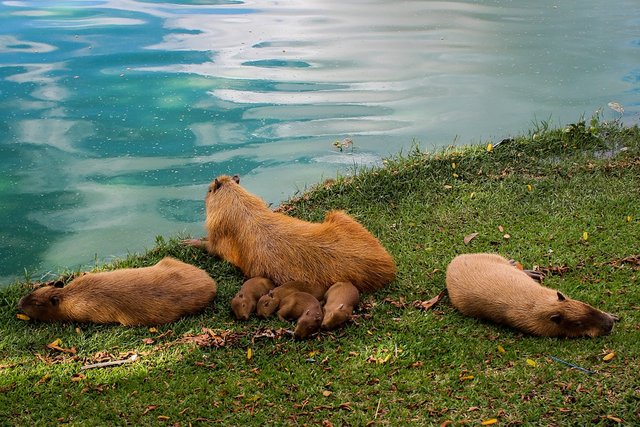
And it’s not just their own they love to spend time with! Other animals think capybaras are pretty great too.
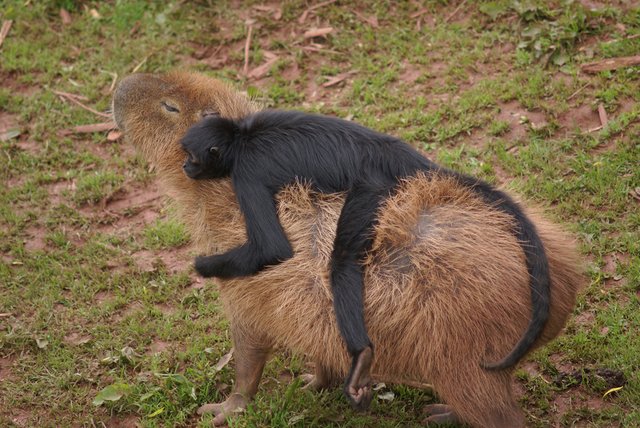
By Yaffa Phillips
Sadly, that involves predators. But the happy, swimming rodent has ways to hide from them. Do you see how the eyes and nose are placed far up on the head? When the capybara’s body is fully submerged, the eyes and nose can still poke out and check if it’s safe to come out.
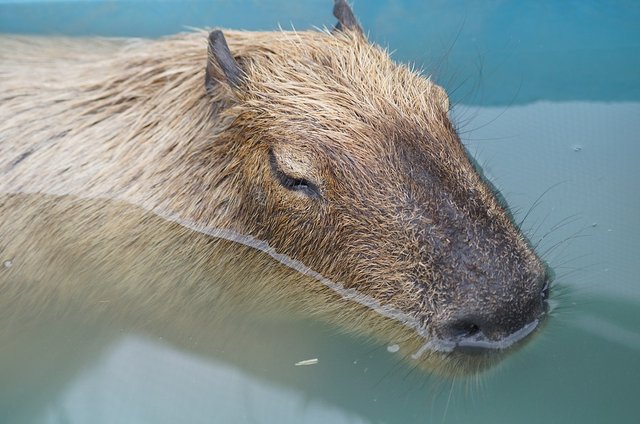
If that’s not the case, it can hold its breath for up to five minutes. Hopefully enough to have the passing jaguar lose interest because then, they can live for a good 6 to 12 years. A better pet than the earthworm I guess!
In some states in the USA, it is legal to own a capybara, but it might lead to some problems in Florida. A handful of capybaras has escaped there some time ago and now there are several more roaming the state.
2016, there were reports of about 50 capybaras living on their own in Florida. They don’t belong there and people are worried that they might become an invasive species. Do you remember how much they eat? And while they might not breed as fast as some other rodents (mice carry their young for about 21 days and can be impregnated the same day they give birth) but they can still have three to eight pups per litter.
Without natural predators, these 50 capybaras can become a huge problem and possibly cause a lot of damage to the local ecosystem. Or maybe not, who knows what the future brings? They need to be stopped from spreading further, but a group of researchers wants them alive.
“We want to keep them from spreading, but can we please not kill them all so I can study them?”
-Elizabeth Congdon of Bethune-Cookman University in Daytona Beach, Fla
Sources:
Capybara - Hydrochoeris hydrochaeris, H. isthmius
Picture taken from pixabay.com if not stated otherwise
Today’s Suesa’s favorite is: @tarazkp
Want some philosophical thoughts on Santa? Or some moving fiction because you didn’t cry enough today? @tarazkp is perfect if longer posts with a lot of thought and incentive to think are what you seek.
Got a scientific topic which you want to see as a story? Leave me a comment!
You want to support scientists on Steemit? You are a scientist on Steemit? Join the #steemSTEM channel on steemit.chat and connect with us!
STEM is an acronym for Science, Technology, Engineering and Math

Beautiful picture, I really sure it is the result from the best camera that you have it. the camera's view is very clear. There is a happy family, but I do not understand with one picture else, it's lot of strange. How it can be... they are look like very friendly each others. Of course you very lucky with that picture. By the way, thanks lot for sharing the great photos.
I ... you ... you did read that these pictures aren't mine, yes?
These “little guys” look so cute and funny! I wonder what my curious cat would think of one if I brought one home!
This dude right here looks a grass cutter. I am almost certain they belong to same family within the same phylum
Nice photos. I've seen some of these guys in Peru and its both unnerving and cool to see such a large and cute rodent.
Wow! Such lovely social mammals.. They don't really look like pigs except for in the last picture.
Also, I've been noticing the miniature @suesa writing on your blog. It beautifies it except for some times it gets under some words and I have to look closely to see the words...
It's a way to catch copy&pasters who steal my content, haven't found a better way yet.
Oh... Nice then.... You'll get notified when they do....
Nice technique....
A guinea pig that could weigh more than a human? We really get smarter everyday. Little wonder they have an itch for the grass. It'd eat that much too if I'm them. Thanks for sharing.
Your timeline is filled with such great lessons. I think I have watched a BBC documentary on the amazon that had them. What I didn't know was how much they eat and they can be a threat to somewhere's ecosystem.
Also that title is quite catchy :D
They are absolute beautiful beings! Have loved them since the first time I saw them. Look at them! beautiful
We have an animal similar to this one back home where I'm from called the Coypu, which I believe is a distant relative to the Capybara. The Coypu is not indigenous to South Louisiana, and has done quite a bit of damage to aquatic vegetation.
Damn I love these rodents <3 Wish I had one as a pet! I was lucky to see them IRL too at the london zoo :D
Oh yeah, almost forgot, your creation is so nice sir...love your blog...followed!